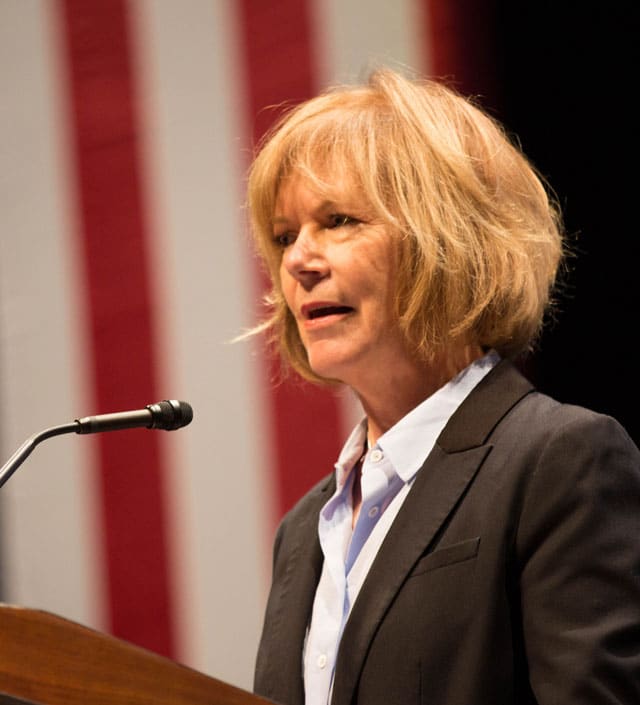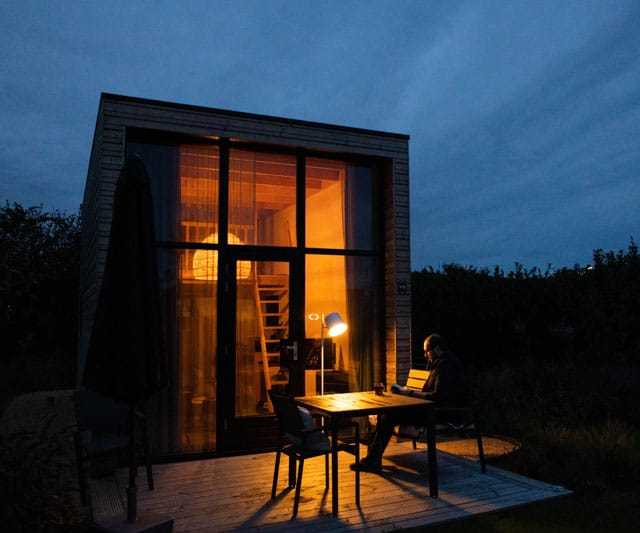Colleagues told Sen. Tina Smith, D-Minn., “’Tina, you can’t legislate away loneliness.’
“‘You can’t write laws that require that people have friends,’” Smith said they told her.
But public policy can — and does — help senior citizens in their daily lives, she said.
Then, Smith said, fellow U.S. senators told her that affordable houses for seniors is a private-sector problem that only the private sector can solve.
She’s out to dispel that myth, too, with legislation that would help more older families keep living in their homes.
Smith shared a bit of her journey to becoming a senior advocate at Century Summit 2022. The annual conference of the Stanford Center on Longevity was held Dec. 13-14 at Smith’s alma mater, Stanford University in California.
Covid-19 wake-up call
The pandemic disproportionately ravaged older Americans, but it also brought attention to the needs of seniors, Smith said.
The CARES Act signed into law in March 2020 and other pandemic relief drove more resources to help older Americans in their daily lives. CARES stands for Coronavirus Aid, Relief, and Economic Security.
The social isolation that was long a problem in elder populations came into clearer focus when the cascading ill effects became relevant to all ages as work, school and shopping moved to each person’s home, she said.
“There’s no doubt the pandemic exacerbated (isolation) challenges, but the challenges were there before,” Smith said.
Smith watched her father, a healthy 92-year-old, struggle alone to care for and say goodbye to her mom, who died of Alzheimer’s during the pandemic.
“I could see the impact of isolation that they both were experiencing as they went through that terrible, terrible situation” in 2020 and 2021, Smith said. “That got me interested in the connection between your mental health and your sense of belonging in your community.”
Meanwhile, in her professional life, she was talking with social service providers about making sure older rural residents had access to healthy food during the pandemic.
“What I was learning from those conversations with providers on the ground is that there was so much more than food that was being contributed to the lives of those seniors,” Smith said.
“The person who was coming by to deliver food to their home was providing a desperately needed social connection. That got me interested in the many relationships between your mental health — your sense of connectedness to your community — and your physical health.”
Also in 2020, Congress was in the periodical process of reauthorizing the Older Americans Act of 1965. That law established the Administration on Aging inside the Department of Health and Human Services and a cornucopia of support services, including Meals on Wheels to deliver nutritious cooked food to elderly and disabled people.
Smith fought to include asking agencies to consider social isolation as a determinant of health as part of their planning process, she said.
Those colleagues who scoffed “essentially, were saying this is a personal issue and not a policy issue, and there is no middle ground in-between,” Smith said.
Obviously, it’s personal, she said, but it’s still morally wrong to ignore isolation in policy considerations.
Take just one of the Act’s longstanding programs, Meals on Wheels: It’s also obvious that recipients make social connections with people who cannot “get out and about,” she said.
Making that connection a structural component, as a policy objective, ensures that every meal comes with a side of emotional nourishment, she said.
Engaging at a personal level with an elderly or disabled American “can lower the healthcare costs for seniors with chronic conditions,” Smith said. “It has long-term effects.”
Good policy translates to good stewardship of tax money, Smith said.
“If you start to look at the implications of that social connection in lowering healthcare costs, broadly speaking, you can start to appreciate the public health value of thinking about social connection not only for the moral reason that everybody should have the opportunity to live a fulfilled and contented life with a sense of purpose, but also the policy objective that if you address social connection you also can do a lot to reduce the dramatically surging healthcare costs among seniors who are dealing with chronic health conditions,” Smith said.
‘Without home, nothing works’
The pandemic aid gave an opportunity to address some housing inequities, but those aid programs are expiring now, Smith said.
“I start with the core value that everyone deserves to have a safe and affordable place to live,” Smith said. “It’s essential to our well-being.”
There’s more demand than supply for housing throughout the economic spectrum in much of America.
Smith has been holding hearings as chairwoman of the Senate Subcommittee on Housing, Transportation, and Community Development on a bill that she and Sen. Jeanne Shaheen, D-N.H., introduced in September to help low-income rural renters stay in their homes.
The Strategy and Investment in Rural Housing Preservation Act would protect largely elderly and disabled people who are at risk of losing expiring rental assistance they get from the U.S. Department of Agriculture’s Rural Housing Service.
“Without access to housing, nothing else in your life works — not your job, your health, your education or your family,” Smith said. “If you don’t have safe, affordable housing in place, nothing else works.”
People don’t necessarily want to live alone if their spouse has died, but they may not want to move into institutional care either, she said.
“I think there’s a fake discussion that happens in Congress saying that it’s a private-sector problem and the private sector will solve it,” she said. “We know that housing broadly speaking has always been a public-private partnership.”
One obvious example of that is the mortgage-interest deduction from federal income taxes to help people invest in home-owning for long-term security, she said.
Solutions need to encompass the whole of federal, state and local public policy, Smith said.
For example, zoning requirements in most towns are stuck in the post-World War II vision for suburban single-family homes and a car for every person.
“That’s not a strategy that works anymore,” Smith said. “It may in some places … but not where multigenerational families live together.”
Even relatively minor local regulations, such as parking, can impede building the varieties of housing that people want, she said, such as accessory dwelling units, ADUs.
Federal policy and funding incentives to natural partnerships can change the direction of American housing, she said.
“We need to do a better job of getting those resources out the door,” Smith said.
Creating healthy senior housing is equally a “blue state” and “red state” issue, she said.
“We can find common ground and make headway,” at least, said Smith, a subscriber to the proverb, ‘Don’t let the perfect be the enemy of the good.”
Linda Hildebrand is a longtime newspaper editor and consumer-action reporter.







